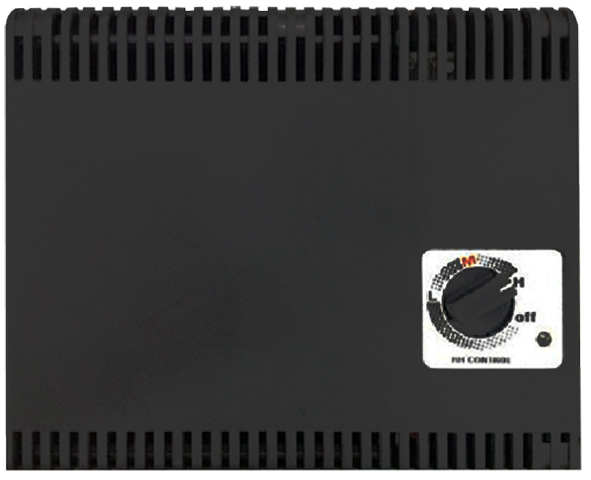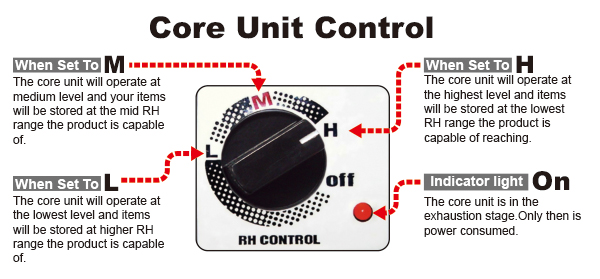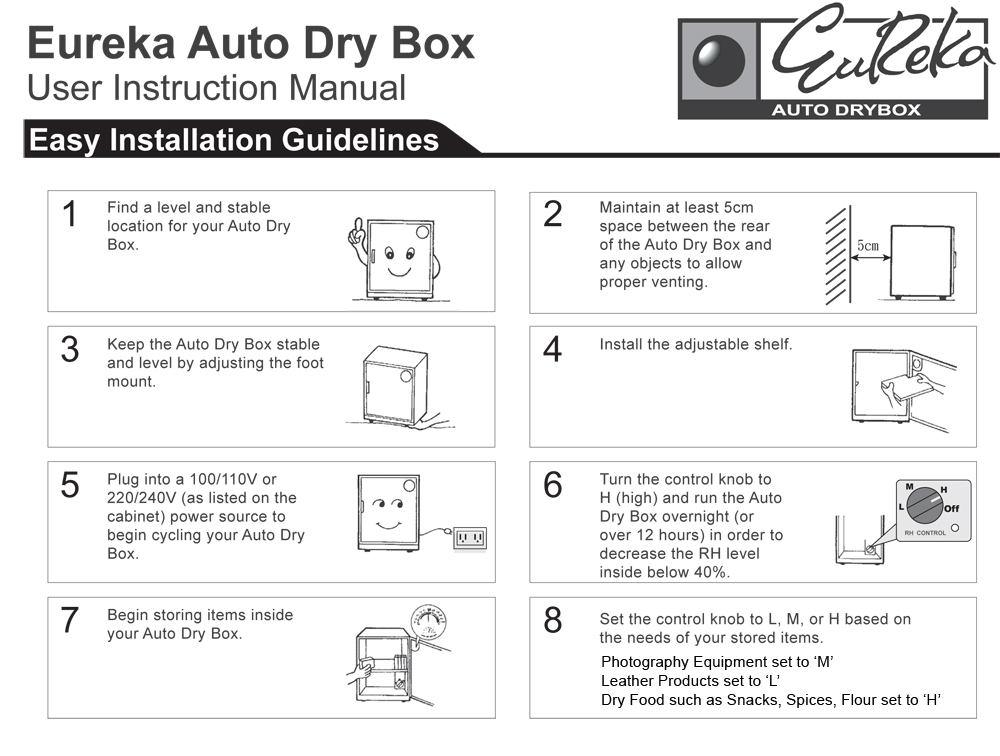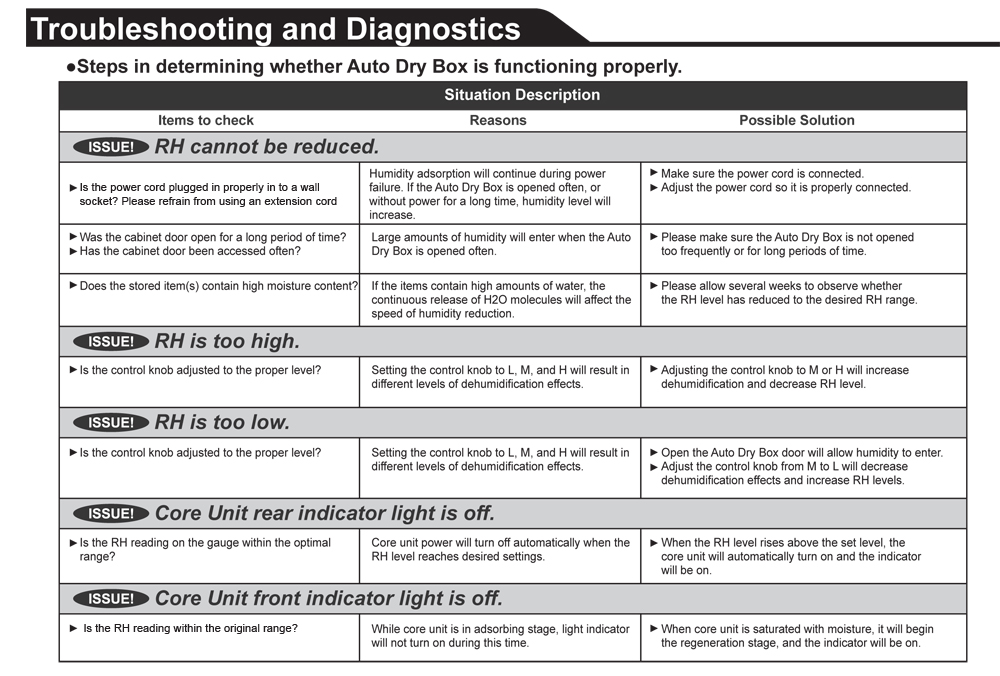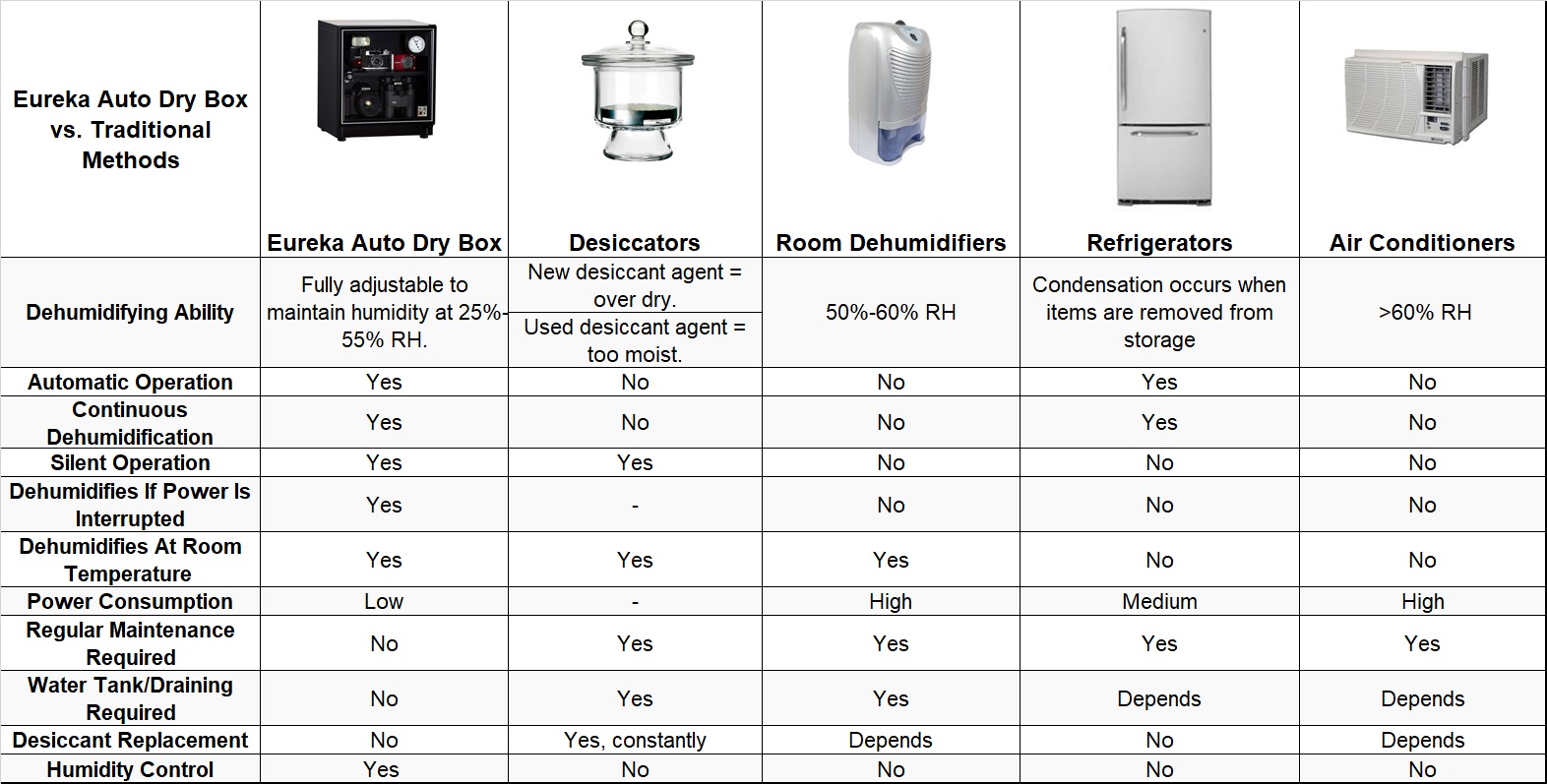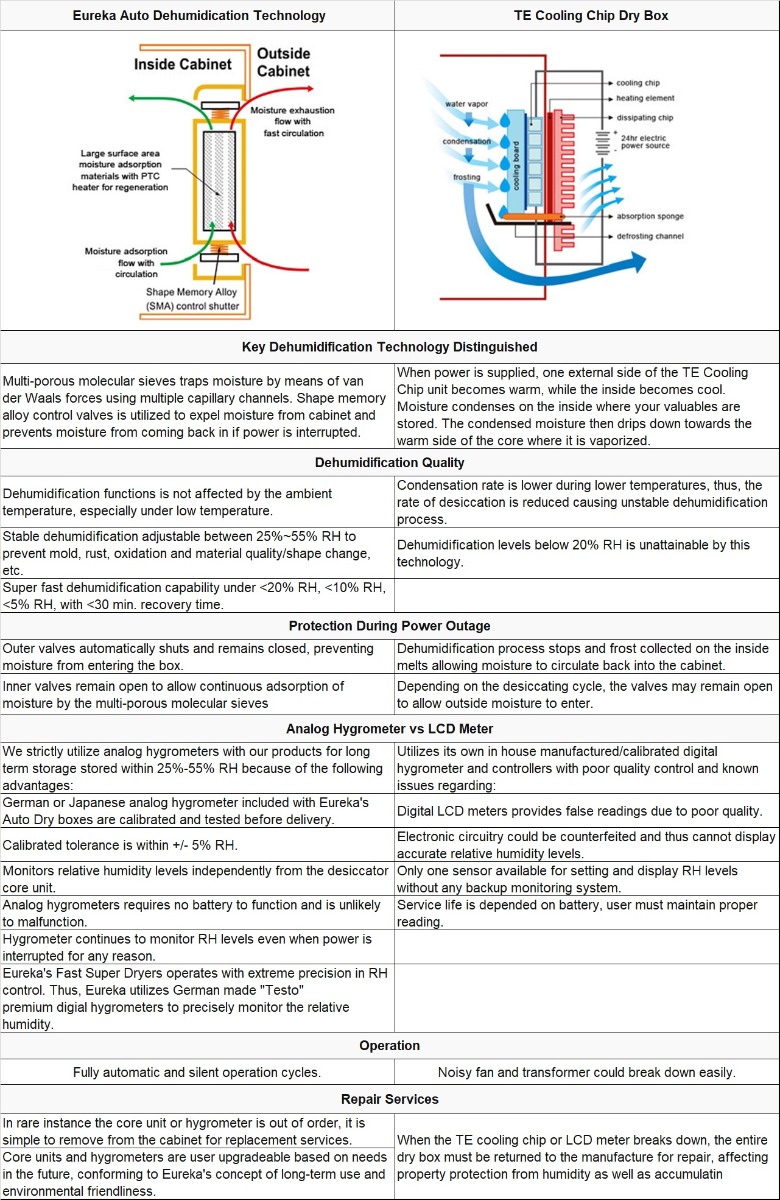Theory of Operation
Eureka Dry Tech Dry Cabinet Dehumidifier Core Unit Working Principles
Eureka Dry Tech’s Auto Dry Box, Dry Cabinet & Electronic Desiccators utilizes multi-porous molecular sieves in its dehumidifier core units and involves two two stages. The first stage is the “Adsorption Stage” and the next stage is the “Exhaust & Regeneration Stage.”
Dehumidifier Core Unit Adsorption Stage:
During the adsorption stage, the dehumidifier core unit’s valve doors open on the inside and seals from the outside. This allows moisture inside the dry cabinet to be naturally adsorbed into the multi-porous molecular sieves in the core unit. During this stage, the core unit performs its desiccating function without any power consumption and will continue to desiccate even when power supply is interrupted. Operational light indicators inside the cabinet will remain off during this time.
Dehumidifier Core Unit Exhaust Stage:
The core unit valve doors automatically seals inside the dry cabinet and open vents outwards to exhaust & expel the moisture absorbed from inside the Dry Box. During this stage, operational indicators will be on.
Moisture adsorbed by the multi-porous molecular sieves is expelled by the drying unit and the core unit is automatically regenerated for moisture adsorption. There are no water tanks to empty, desiccant bags & packs to replace, or any other maintenance required by the user. Simply plug in the power cord, set the desired RH level and the Eureka Auto Dry Box will begin its dehumidifying operation cycle. The core unit performs the moisture adsorption process without any power required. Thus is safe and clean for the environment.
Additional features of Eureka Auto Dry Boxes, Dry Cabinets, Electronic Desiccators are:
- Fully adjustable dehumidification range from 1%-60% RH, with variable speeds for reaching your desired RH level.
- Integrable with other technologies such as low temp refrigeration, humidifier, HEPA, nitrogen (N2) & dry air purge system, UV & anti-bacterial, temperature control & management systems, satisfying special environment needs for research and development.
- Constant temperature, constant pressure, power saving, durable and fully automatic operation.
- Fully sealed cabinet, prevents dust while keeping items moisture free.
Eureka’s Automatic Desiccating Core Units are:
- User Friendly: Simply plug in the device, set the desired RH level and the core unit will take care of the rest.
- Durable Design: Core units are known for long service life span, proven by millions of users around the world.
- Economical: Consumes minimal electricity (averaging 4w/hr) with no regular maintenance or service parts.
- Stable: Continuous and silent operation with no affect on ambient noise.
- Safe: No compressors, so no overheating concerns to worry about.
How To Set Up
The dry unit runs on a 4 hours dehumidification cycle:
Lights ON for 30 mins ( Exhausting moisture that was collected)
Lights OFF for 3.5 hours ( Absorbing moisture )
Trouble Shoot Steps
If the reading is higher than 60%RH, customers will need to check performance of Drying Unit.
Here are the steps for self-examination.
- Turn off the main switch.
- Empty the cabinet.
- Turn the controller knob to position ‘H’.
- Close the door of the cabinet.
- Wait for 10 mins
- Plug the into a different the wall socket. We do not recommend users to connect to a multi socket extension.
- Record the current humidity reading.
- Leave the dry cabinet on for 12 hours and refrain from opening the door during this period.
- After 12 hours, check the reading on the hygrometer. If its less than 40%, the dry cabinet is in working order
- If RH is remains higher than 60% , please contact us at 6749 1812
II. Indicator of Hygrometer
Please note that when you read the reading of hygrometer, please see the narrow, long side of the needle, instead of short and arrow side.
Comparison with Traditional methods
Differences in Dehumidifying Technology
Understanding Moisture Damage
v HOW DOES HUMIDITY CAUSE MOISTURE DAMAGE?
The relative humidity of an air-water mixture is defined as the ratio of the partial pressure of water vapor (H2O) in the mixture to the saturated vapor pressure of water at a given temperature. Relative humidity is normally expressed as a percentage and is calculated by using the following equation:
RH (Relative Humidity) is the quantified unit used to describe the level of humidity.
Different types of moisture damages occur at different humidity levels. The average relative humidity level can be found by looking to the local weather reports in your area. Maintenance of most objects below 50% RH at room temperature can protect items from moisture caused damages.
What is condensation?
Condensation is water vapor suspended in the air settling on cool surfaces.
- Photography, cinematography, and other equipment collects moisture while in the field. Temperature changes is inevitable when that equipment is stored and transported to a cooler/warmer environment causing condensation or frosting to occur. In the long term, damages will incur to a hefty price tag fixing it
Leather can get mouldy when its constantly expose to humidity of more than 70%. Moreover, a high ambient temperature and lack of air circulation will contribute to growth of fungi and bacteria. Ideally, leather should be stored at room temperature and a humidity of 40-55%.
Eureka DryCabinet Is the Solution To Moisture Damages
Our Dry Cabinets (25%~55% RH) provides the best moisture damage prevention for aging, molding, spoiling, rusting, corrosion, denaturing, etc.
Moisture Damages Caused By Ambient Humidity
- Objects begins to mold and spoil at 60% RH.
- Objects begins to deteriorate, age, and oxidize at 35% RH.






